StampAuctionNetwork's eZine
This is a new feature at StampAuctionNetwork where we bring you editorial content from various independent authors.
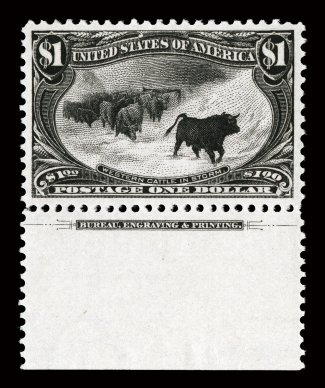 Exploring Stamps on "The Cattle in the Storm" by Graham Beck
Exploring Stamps on "The Cattle in the Storm" by Graham Beck
Graham Beck, from the Youtube video channel, "Exploring Stamps"
does an amazing job introducing the next generation to Philately. His latest video looks at the United States "Cattle in the Storm" to ask the question... "Is this the most Beatiful U.S. Stamp"? Let's show Graham some love and visit his site and take a listen.
In the video he mentions Canada's "Bluenose" as a contender for the most Beautiful stamp of all -- so in my video we will look at both stamps.
For the Complete Article or Video Click
(here)
To Watch a Video with Bonus content using the StampAuctionNetwork Data Click
(here)
To Browse the Auction Sale Click
(here)
 Rare stamps: the 1935 Silver Jubilee Prussian Blue stamp by Stamp Collector
Rare stamps: the 1935 Silver Jubilee Prussian Blue stamp by Stamp Collector
The rare 1935 Silver Jubilee 'Prussian Blue' stamp is one of the most desirable stamps issued
during the reign of King George V. Find out more about this stamp rarity in our special stamp guide.
For the Complete Article or Video Click
(here)
To Watch a Video with Bonus content using the StampAuctionNetwork Data Click
(here)
To Browse the Auction Sale Click
(here)
 The 'Chalon Head' New Zealand stamps by Stamp Collector
The 'Chalon Head' New Zealand stamps by Stamp Collector
The 'Chalon Head' New Zealand stamps
served most of the country's postal needs from 1855 to 1874. So how much should you spend on examples of the stamps and what varieties are available?
Find out in our guide to stamp values New Zealand’s first postage stamps, issued in 1855, displayed a striking image of Queen Victoria. The central design derived from an 1838 oil painting by
Alfred Edward Chalon which displayed a full-length portrait of the monarch in her state robes at the time of her coronation in 1837.
For the Complete Article or Video Click
(here)
To Watch a Video with Bonus content using the StampAuctionNetwork Data Click
(here)
To Browse the Auction Sale Click
(here)
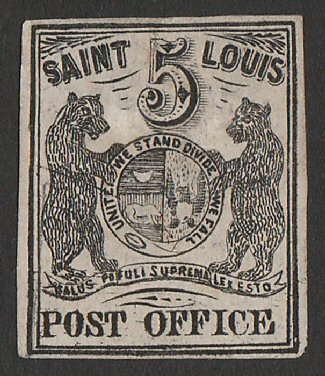 "Repaired Bears" - How Provenance helps with the St. Louis Postmasters' Provisionals by Tom Droege
"Repaired Bears" - How Provenance helps with the St. Louis Postmasters' Provisionals by Tom Droege
It is no secret that over the years, the St. Louis Postmasters' Provisionals have been ingeniously repaired. In fact of the 599 examples in our database,
67 mention repairs of one kind or another. We went to a subscriber model to invest in technologies that leverage our database.
Provenance is all about making wise decisions in bidding using price history, and this technology takes it further. While the auction companies include the mention of repairs in their descriptions,
our image recognition ability allows you to see the extent of the repair visually. If this interests you, I have prepared a short video which walks you through three examples. Remember, I am no stamp
expert -- I would not know how to identify a repair by examining the stamp itself. And so, whether you ever own this stamp or not, I think you will find the video informative.
And remember to give yourself a gift of knowledge this season by signing up for BASIC extended features or upgrading to Provenance and Census with PREMIUM Extended features.
For the Complete Article or Video Click
(here)
To Watch a Video with Bonus content using the StampAuctionNetwork Data Click
(here)
To Browse the Auction Sale Click
(here)
 1897 Red Revenue Small One Dollar by Bin Gu
1897 Red Revenue Small One Dollar by Bin Gu
Kelleher & Rogers Sale 38 Lot.179. 1897 Red Revenue Small One Dollar, only 50 of these revenues are stamped with the small characters of “1 dollar” and just 32 examples are recorded to date,
so this stamp is recognized by the global collectors as the king of Chinese Stamps. The example offered here is the right single from the famous “Newbury” pair. In the video I am going to look at the
highest prices paid for some other Chinese stamps. Note the video will be in your downloads and you will need to click on it.
For the Complete Article or Video Click
(here)
To Watch a Video with Bonus content using the StampAuctionNetwork Data Click
(here)
To Browse the Auction Sale Click
(here)
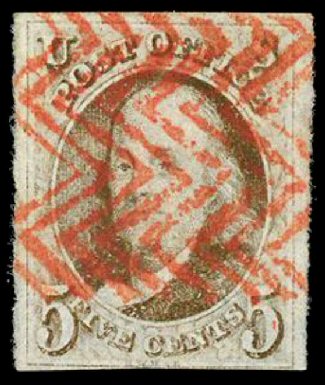 Highlights from Current Sales - November 2022 by Tom Droege
Highlights from Current Sales - November 2022 by Tom Droege
Watch this video to explore highlights from upcoming sales. We are featuring stamps that either 1) are at the top of the census 2) are quality stamps that are currently selling at
below their market rates, and / or 3) increase your knowledge of philately. The stamps selected are from the upcoming Cherrystone, Schuyler Rumsey, Kelleher and Michael Aldrich sales. You don't need
provenance or census to watch the video, but if you are subscribed you can discover these items yourself.
Whether you ever use provenance and census or not, we hope you will enjoy the presentation on the stamps themselves.
For the Complete Article or Video Click
(here)
To Watch a Video with Bonus content using the StampAuctionNetwork Data Click
(here)
To Browse the Auction Sale Click
(here)
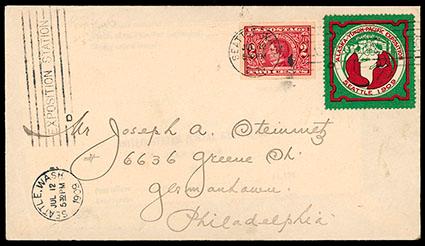 A Famous Philatelist's Letter from 1909 by Mike Wilson
A Famous Philatelist's Letter from 1909 by Mike Wilson
In 1909, a stamp collector from Philadelphia, who nine years later would play a major financial role in the acquisition of the pane of “Inverted Jenny’s,” traveled to Seattle to attend the Alaska-Yukon-Pacific Exposition. While there, he sent himself a letter from the Post Office’s exhibition franked with an imperforated 2-cent Alaska-Yukon stamp (US Scott Catalog #371). More than 113 years later, that cover was auctioned
off by Schuyler J. Rumsey with no mention of the cover’s noteworthy sender. Learn about how the significance of this cover was researched in this 5-minute read
For the Complete Article or Video Click
(here)
To Watch a Video with Bonus content using the StampAuctionNetwork Data Click
(here)
To Browse the Auction Sale Click
(here)
 The Day of the Dead Revisited (with a tip of the hat to the Classics) by Tom Droege
The Day of the Dead Revisited (with a tip of the hat to the Classics) by Tom Droege
It is a couple days before the Day of the Dead, so it is appropriate to revisit the USPS NFT series at VeVe.
The article and video will cover different content as we discuss and demonstrate both the Day of the Dead NFTs and the series based on classic US stamps from the 1850's.
You will learn how to navigate the site and if you want to, how to purchase an NFT.
For the Complete Article or Video Click
(here)
To Watch a Video with Bonus content using the StampAuctionNetwork Data Click
(here)
To Browse the Auction Sale Click
(here)
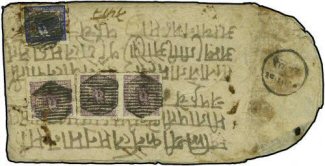 Nepal's Stamps & Himalayan Expedition Mail: S4E7 by Graham Beck
Nepal's Stamps & Himalayan Expedition Mail: S4E7 by Graham Beck
As promised, another Youtube video from Graham Beck, from the Youtube video channel, "Exploring Stamps". So let's explore Nepal's postage stamps. For this episode, a definitive stamp from the 1990s
provides a lesson on Nepal's history, its monarch, and its Mountain expedition mail. For my part, again I will take a look at the data at StampAuctionNetwork to discover the auction companies that
have had special sales featuring Nepal, early postal history, including the very first stamp used in Nepal on cover, and even a couple of expedition covers. Be sure to watch Graham Beck's video.
For the Complete Article or Video Click
(here)
To Watch a Video with Bonus content using the StampAuctionNetwork Data Click
(here)
To Browse the Auction Sale Click
(here)
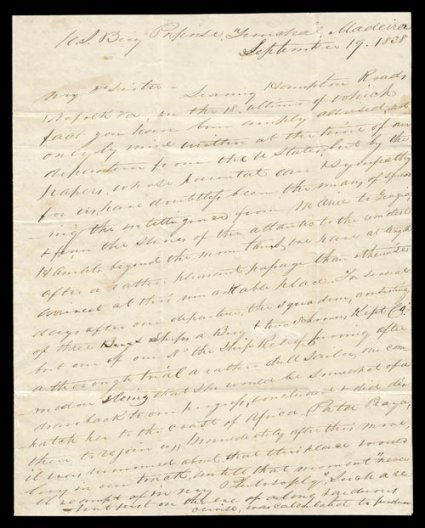 National Postal Museum: Polar Philately and the Wilkes Antarctic Expedition by Hal Vogel
National Postal Museum: Polar Philately and the Wilkes Antarctic Expedition by Hal Vogel
The Smithsonian's National Postal Museum will host the 19th Maynard Sundman Lecture Tuesday, Nov. 1, at 4 p.m. ET online on Zoom. Admission is free, but reservations are required. The discussion, "Polar Philately and the Wilkes Antarctic Expedition," will be presented by Hal Vogel, retired Army special operations and intelligence officer and professor emeritus at Rowan University in New Jersey. In 1838, the U.S. Exploring Expedition (1838–42) began its examination of Antarctica in what would become this worldwide adventure’s most remembered legacy leading many to remember it as the "Wilkes Antarctic Expedition." The expedition created what organized philately, including one of its specialties, polar philately, refers to as "archival mail," or ordinary mail that serves as written testimony to aspects and personalities of an historical event. Unfortunately, although discoveries of this type of mail from polar expeditions do still occur, (archival) mail still is unknown from a number of the earliest expeditions.
Mail from the Wilkes Antarctic Expedition only began to surface in the 1980s. Note that the link to the catalog has some additional Antarctica material that should also be of interest.
For the Complete Article or Video Click
(here)
To Watch a Video with Bonus content using the StampAuctionNetwork Data Click
(here)
To Browse the Auction Sale Click
(here)
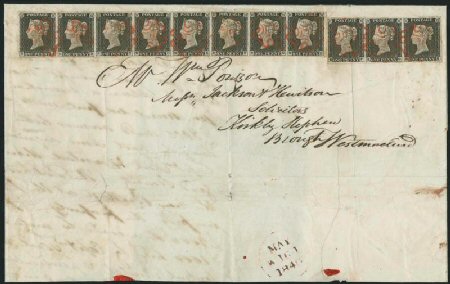 Introducing Exploring Stamps and Next Generation by Graham Beck
Introducing Exploring Stamps and Next Generation by Graham Beck
You may be familiar with Graham Beck, from the Youtube video channel, "Exploring Stamps". We've referenced his material at StampAuctionNetwork before, both in our aid to sell your collection (he has a very fine video on that process) and in our conversation about NFTs. I was able to meet him personally at Stampex in London and wanted to promote his latest video. We are going to bring you more videos by Graham as we develop a new focus at StampAuctionNetwork. That focus is called "Next Generation" and we will be involved in a number of efforts to bring in the next generation of Stamp Collectors. So without further commentary, please take a look at his latest video as described below: "During my trip to the 2022 Stampex in London, I watched Bill Barrell remove Penny Black Stamps from an 1840s cover, this reveals an interesting lesson in the world of philatelic rarities and how they can deceive buyers. Also, using Hydrogen Peroxide, Bill removes years of sulfurization to reveal the true colors of the maltese crosses." For my part, again I will take a look at the data at StampAuctionNetwork and hopefully my insights will be relevant to Bill Barrell's excellent presentation. But be sure to watch Graham Beck's video. In fact I ask everyone here on this newsletter to pull up this video. The production value is incredible.
For the Complete Article or Video Click
(here)
To Watch a Video with Bonus content using the StampAuctionNetwork Data Click
(here)
To Browse the Auction Sale Click
(here)
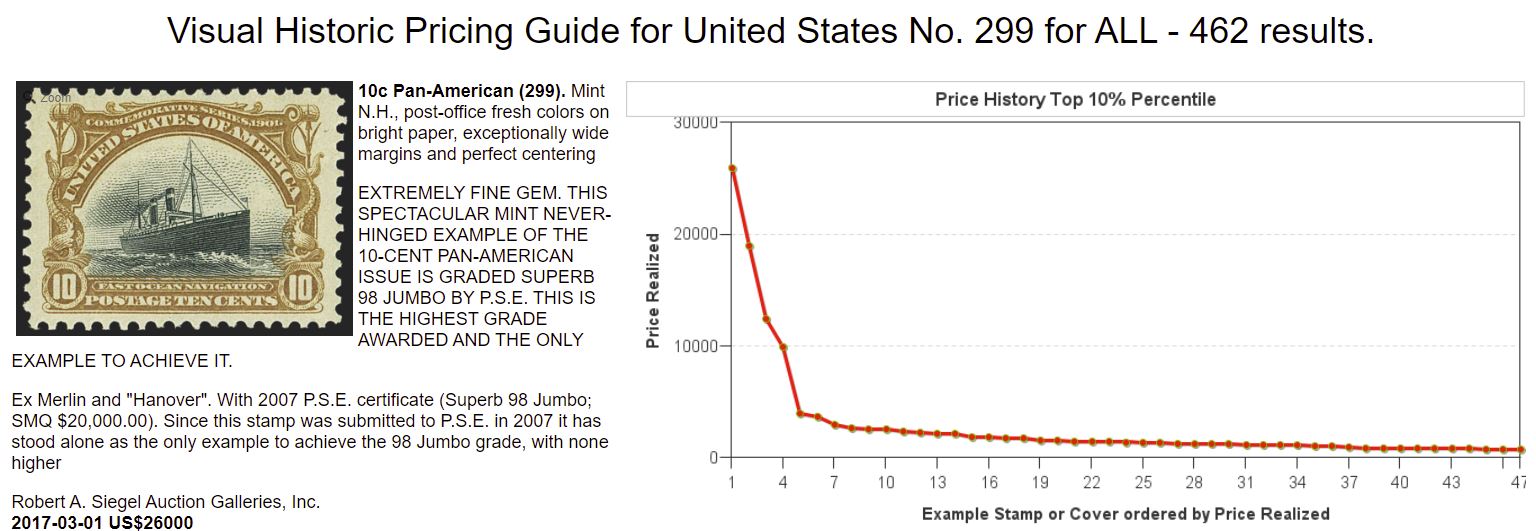 Visual Pricing Guide Explained using Six Lots from the upcoming Matthew Bennett Auction by Tom Droege
Visual Pricing Guide Explained using Six Lots from the upcoming Matthew Bennett Auction by Tom Droege
In this 2nd video introducing the Visual Pricing Guide, we take six lots from the upcoming Matthew Bennett Auction to pull it all together.
The video shows how 20 years of pricing can be used to verify and expand the information provided by the auction firms.
An added histogram takes the same data and presents it by year. Our Visual Pricing Guide is not as detailed as Provenance or Census, but for $50 a year it takes Get Market Data to the next level.
It uses a percentile approach to present the data so the trends are obvious. If after watching the video, you want to test drive it for 45 days -- email me and I will sign you up for a demo.
But the video should convince you to go ahead and do the $49.95 / year BASIC Extended features without a trial period.
For the Complete Article or Video Click
(here)
To Watch a Video with Bonus content using the StampAuctionNetwork Data Click
(here)
To Browse the Auction Sale Click
(here)
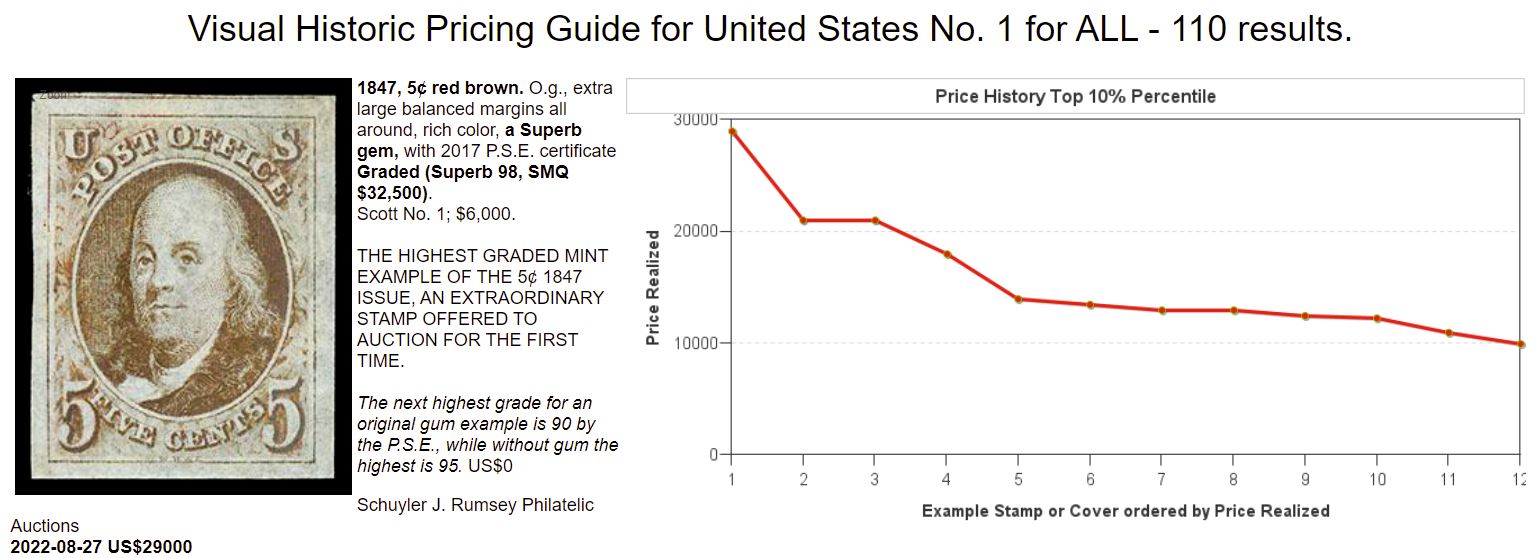 Introducing the Visual Pricing Guide by Tom Droege
Introducing the Visual Pricing Guide by Tom Droege
This breakthrough enhancement is a visualization of Get Market Data and will be a game changer for you. If the #1 rule of bidding at auction is "Bid what the lot is worth and what you are willing to pay", then this is the next generation tool for determining value. Our Visual Pricing Guide is not as detailed as Provenance or Census, but for $50 a year takes Get Market Data to the next level.
It uses a percentile approach to take 30 years of auction data and present in a way to immediately see the market trends for a stamp or cover.
For the Complete Article or Video Click
(here)
To Watch a Video with Bonus content using the StampAuctionNetwork Data Click
(here)
To Browse the Auction Sale Click
(here)
 What Makes this Stamp Great? by Matthew Healey
What Makes this Stamp Great? by Matthew Healey
Analyzing some of the phenomenal 1869 Pictorials in the upcoming Rumsey sales. There are certainly some very great stamps in Schuyler Rumsey’s sales coming up in a few
days at the big summer stamp show in Sacramento. I could probably do many episodes of “What Makes this Stamp Great?” just looking at the Peter Iwate collection of classic United States (big PDF here),
particularly the 1869 Pictorials. Matthew's article covers a lot of ground, from background, to grading and populations, thoughts on asking for regrading, and then a focus on one of the covers. I am providing a video demonstrating the Free Search and Extended Features searches to gather
historic price and relevant information from the StampAuctionNetwork database. And I am a musician and I watch Rick on an occasional basis.
For the Complete Article or Video Click
(here)
To Watch a Video with Bonus content using the StampAuctionNetwork Data Click
(here)
To Browse the Auction Sale Click
(here)
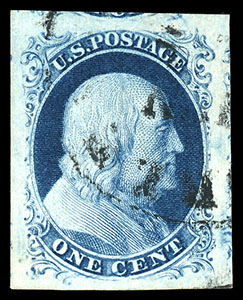 What defines the best? by Matthew Healey
What defines the best? by Matthew Healey
In this video I am going to take off from the Matthew Healy article “What defines the best” and discuss three lots from the Rumsey sale to raise a
couple questions. First, does price paid correlate with quality and additionally, does price transparency hurt auction results?
The Rumsey sale has some great stamps in it. We are going to focus on three stamps that are in the Peter Iwate Collection.
Each holds the record for the highest price paid. We are going to look at a number 8, 8a and 24. If you have an interest in any of these stamps, check out the article and video. By the way, the #8 is one of
only two stamps with the highest grade 98 and given its scarcity and unabtrusive cancel could be without equal. Though we don't discuss lot 3012, it is worth
a look as well, as it is the only #1 mint graded 98 and should rise to the top of the leader board given that the highest price paid for a mint #1 is graded 95XQ.
For the Complete Article or Video Click
(here)
To Watch a Video with Bonus content using the StampAuctionNetwork Data Click
(here)
To Browse the Auction Sale Click
(here)
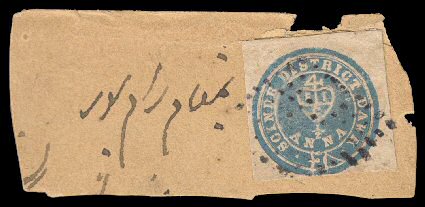 Gems of India by Matthew Healey
Gems of India by Matthew Healey
Scinde (nowadays Sindh, in Pakistan) was the place where India’s—and indeed all of Asia’s first postage stamps were issued.
The British conquered the district in 1843 and found that the old postal system of ‘dak’ (or dawk) runners was inefficient.
Within a decade, they introduced a flat-rate, pre-paid mail service modeled on Rowland Hill’s reforms in the U.K. The first ½-anna stamps of 1852, with the logo of the East India Company
embossed on wafers of red wax, proved too fragile, so they were soon replaced by blind-embossed white paper stamps.
These, however, were a bit hard to read in the bright sunshine, so they were replaced with a blue-and-white version.
All three types are elusive, the red one being the scarcest. With a demonstration on how to pull up other examples from the StampAuctionNetwork database.
For the Complete Article or Video Click
(here)
To Watch a Video with Bonus content using the StampAuctionNetwork Data Click
(here)
To Browse the Auction Sale Click
(here)
 Your stamps are on drugs. by Matthew Healey
Your stamps are on drugs. by Matthew Healey
Long, long before anyone thought to issue stamps to show prepayment of postage (for the newbies in the audience, that was in 1840) stamps were being used to collect taxes, mostly on legal documents. That idea actually goes all the way back to 17th-century Holland. Throughout the 19th century, the use of stamps to collect taxes was gradually applied to more and more things. Stamps were cheap to print and easy to use. Among the most frequently taxed items in Great Britain and the United States were medicines. Every bottle and packet had to bear a stamp showing the tax on it had been paid, or it could not be legitimately sold. Perhaps perversely, customers began to demand the presence of the tax stamp as a way of making sure they weren’t being sold snake oil. In Britain, stamp designs eventually had to be amended to remind consumers that the mere presence of the stamp did not imply any government guarantee of efficacy. In the video Tom Droege explains how to use BASIC Extended Features ($20-50 / year) to get comparitive pricing to aid in bidding in this sale not at StampAuctionNetwork.com.
For the Complete Article or Video Click
(here)
To Watch a Video with Bonus content using the StampAuctionNetwork Data Click
(here)
To Browse the Auction Sale Click
(here)
 Ukraine's turbulent history, in stamps by Matthew Healey
Ukraine's turbulent history, in stamps by Matthew Healey
Ukraine, thanks to its location and natural riches, has been at the core of many of Europe’s conflicts for the last 110 years. Not surprisingly, much of its troubled history can be read in its stamps, both official and unofficial. From time to time, an auction pops up with a good selection of some of these historic issues. Oldlouis, based in North Carolina, offers two such sessions this month as part of its three-week series of sales focused on Central and Eastern Europe. The first Ukraine sale takes place Aug. 20 at 2pm EDT with over 300 lots covering issues of the People’s Republic of 1917-1920, Western Ukraine, and various occupations, as well as cinderellas issued in the Ukrainian diaspora; the second sale is on Aug. 23 at noon and consists of nearly 500 lots of provisional Trident overprints, issued in 1918 during the early days of Ukrainian independence from Imperial Russia.
The video provides three easy searches to get more info on Ukraine collecting.
For the Complete Article or Video Click
(here)
To Watch a Video with Bonus content using the StampAuctionNetwork Data Click
(here)
To Browse the Auction Sale Click
(here)
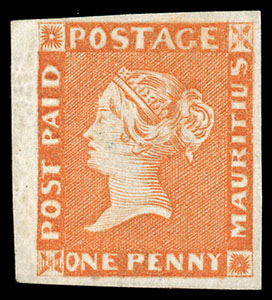 What's in store in Sacramento by Matthew Healey
What's in store in Sacramento by Matthew Healey
There are three Rumsey auctions lined up for Great American Stamp Show Aug. 25-28. It’s actually one big, four-day sale of about 2,000 U.S. and worldwide lots, and two more specialized sales on the side, both of better U.S. stamps and covers. I expect to devote at least three further posts to these auctions: two looking at highlights from different sections, and one looking at the wealth of background data offered by StampAuctionNetwork to help bidders make informed calls about which lots to pursue and how aggressively to pursue them. For the 15 minute review using the screening tool watch the video provided by Tom Droege.
For the Complete Article or Video Click
(here)
To Watch a Video with Bonus content using the StampAuctionNetwork Data Click
(here)
To Browse the Auction Sale Click
(here)
 America's ersatz empire on sale by Matthew Healey
America's ersatz empire on sale by Matthew Healey
IN THE AFTERMATH of the 1898 Spanish-American war, the United States found itself suddenly in possession of several overseas territories and no clear idea what to do with them: Puerto Rico, Guam, the Philippines and (temporarily) Cuba. Around the same time, work was rapidly proceeding on the construction of a canal across the isthmus that connected North and South America, and the U.S. took control of a strip of territory in what was then the Colombian department of Panama. Updated with prices realized from the Kelleher sale of the Jack Shartsis collection of Canal Zone and Philippines. Video contains provenance and census info on a couple stamps from the article.
For the Complete Article or Video Click
(here)
To Watch a Video with Bonus content using the StampAuctionNetwork Data Click
(here)
To Browse the Auction Sale Click
(here)
 It’s a topsy-turvy world, all right by Matthew Healey
It’s a topsy-turvy world, all right by Matthew Healey
The Cherrystone sale coming up on Aug. 9-10 features a number of inverted-center errors from around the world, including some that are very seldom seen. Each is known in fewer than 50-100 examples. Let’s take a closer look at three of them, using data on past sales here at SAN and recalling the stories behind each one: Italy’s 1928 30-centesimi Emanuele Filiberto (Scott 203a) with full OG; Hungary’s 1921 5000-korona Madonna and Child (386a) unused; and Argentina’s 1899 5-peso Liberty Seated (140a), also unused.
For the Complete Article or Video Click
(here)
To Watch a Video with Bonus content using the StampAuctionNetwork Data Click
(here)
To Browse the Auction Sale Click
(here)
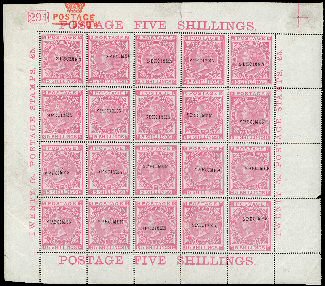 Could this sheet be unique? by Matthew Healey
Could this sheet be unique? by Matthew Healey
Lot 1426 in the Stanley Gibbons auction happening July 26-28 is a full mint sheet of 20 of Great Britain’s 1867-74 Queen Victoria 5-shilling rose, Plate 2, with all the marginal inscriptions and large part original gum. Each stamp bears a small Specimen overprint. Aside from a few trivial creases and minor separation of the perfs, it’s stunningly beautiful. Mint stamps of early Queen Victoria are rare. Mint multiples are even rarer. Full mint sheets, even when covered in Specimen handstamps, are the stuff of dreams. Gibbons says this sheet has lain in one family’s collection for 62 years, almost an entire lifetime. While mint specimen sheets of the 5s Plate 1 are not unheard of, even great collectors like Reginald M. Phillips and Marcus Samuel had only blocks of Plate 2, not a full sheet. So just how rare is this sheet? After doing a little research, it appears it may in fact be unique.
For the Complete Article or Video Click
(here)
To Watch a Video with Bonus content using the StampAuctionNetwork Data Click
(here)
To Browse the Auction Sale Click
(here)
Our Authors
Matthew Healey is a freelance philatelic writer who loves classic stamps and postal history, with an emphasis on Great Britain and its current and former realms.
He contributes regularly to Linn's Stamp News and has also appeared in the American Philatelist, the Collectors Club Philatelist and The New York Times.
Follow his stamp auction newsletter at matthewhealey.substack.com
Mike Wilson, who is a member of several philatelic organization including the American Philatelic Society, US Philatelic Society, and Greater Philadelphia
Stamp & Collectors Club, collects pre-1940 US stamps and postal history from the stampless era through the mid-20th century.
He especially enjoys researching the senders and recipients of postal items and posting the results of his research to his blog,
Mike Wilson
| 




















